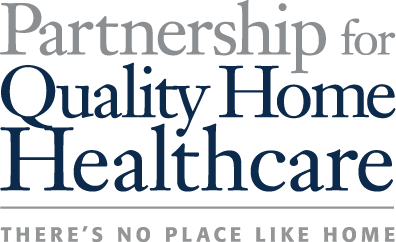December 8, 2023
Home Health Leaders: MedPAC Home Health Margin Estimates are Dangerously Flawed, Risk Misleading Policymakers
Posted in: Press Release
Washington, DC – The Partnership for Quality Home Healthcare (the Partnership) and the National Association for Home Care & Hospice (NAHC) today expressed serious concerns about the validity and reliability of the Medicare Payment Advisory Commission’s (MedPAC’s) initial presentation on home health margins at its December public meeting. MedPAC’s flawed approach and misleading conclusions fail to accurately inform policymakers about the state of the Medicare Home Health benefit at a time when the program is under extreme financial pressure due to billions of dollars in Medicare cuts that began in 2020 and are planned over the next decade.
“There are many shortfalls in MedPAC’s home health margins report – starting with the fact that MedPAC’s analysis only captures a declining fraction of the Medicare home health population, ignoring that overall margins are low. Additionally, relying on incomplete, poor-quality data and an opaque methodology runs the risk of dangerously misleading policymakers who rely on MedPAC to inform their decisions. The Medicare Home Health benefit is a critical part of our country’s healthcare system and is essential for millions of older Americans who prefer to receive care at home. Policymakers need a holistic, complete analysis that accurately illustrates the state of home health delivery across patients and payers,” said Joanne Cunningham, Chief Executive Officer of the Partnership. “In particular, policymakers need to seek deeper analysis from MedPAC and other government policy entities about the access challenges happening right now that are compromising this important delivery system.”
Four concerning shortfalls of MedPAC’s initial presentation:
- The presented data is misleading: MedPAC only analyzed Medicare fee-for-service (FFS) margins, a fraction of patients that home health agencies treat. This limited scope ignores the fact that Medicare Advantage (MA) plans generally pay significantly less than FFS, and state Medicaid programs pay even less than that. Taken together, overall home health margins are significantly lower than the incomplete picture MedPAC painted today. Without positive Medicare FFS payments, home health agencies would simply not be viable, as those payments are used to cover the shortfalls in other public programs, including MA and Medicaid.
- The data quality is poor: Medicare cost reports have not had a direct relationship to payment in more than 20 years. The data used by MedPAC is over two years old, meaning it fails to capture the historic inflation and rising costs plaguing home health providers across the country. Costs reports also rely on a definition of allowable costs that fails to capture ordinary business costs such as equipment, telehealth services, certain taxes, and marketing. It also excludes essential providers of home health services simply because those providers are integrated within a health system. All of this raises serious questions about the accuracy and reliability of MedPAC’s data.
- The methodology is opaque: It is difficult to evaluate the accuracy and reliability of MedPAC’s report because its methodology is not fully transparent. This diminishes confidence in the results and relevance for policymakers—especially since one recent analysis shows that margin results can be impacted by as much as plus or minus 7 points (a 14-point spread) depending on the approach used.
- The results are not suitable for policymaking: Relying on broad, one-size-fits-all averages for Medicare rate setting is bad policy. Treating providers with low margins in underserved or rural areas the same as those with stronger performance – that happen to share the same broad average – risks loss of access for beneficiaries who rely on that care.
To help account for these serious drawbacks, MedPAC should more accurately inform the policymaking process by including an analysis of all-payer margins, as well as a more granular examination of margins based on different payer types (e.g., MA, Medicaid, etc.), geographic divisions, and other segments of the provider industry rather than a reliance on broad averages focused on Medicare FFS alone.
A bipartisan, bicameral bill has been introduced that would require MedPAC to be more transparent in its calculations about home health financial data and the stability of the sector. H.R.5159/S.2137 would require MedPAC to report on aggregate trends under Medicare Advantage, Medicaid, and other payers and consider the impact of all payers on access to care for the Medicare population.
“When policymakers don’t receive accurate information, they risk making policy decisions that have unintended, yet negative, consequences on beneficiaries. We hope that MedPAC can address our concerns about how it came to its erroneous conclusions in this presentation and work to provide stakeholders with more accurate, reliable, transparent, and actionable data,” said William A. Dombi, President of NAHC.
###
